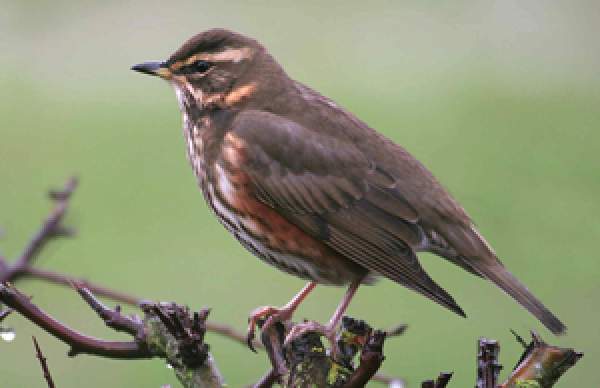Redwing
Turdus iliacus

The Redwing is a noticeably small, rather slight thrush, with a pale stripe above the eye and another, less-pronounced, below the cheek. The spots on the underparts are strongly marked, more so than the in Song Thrush, as is the chestnut-red colour to the underwing and flanks, which gives the bird its common name. It is this combination of face-pattern, strong markings and red underwing that distinguish this species from the slightly larger Song Thrush.
The thin, plaintive, whistles that one sometimes hears on misty evenings in October and November are likely to be Redwings. These are the contact calls uttered in flight.
Redwings are currently colonising Britain with about 50-100 pairs breeding in the highlands of Scotland. They require scrubby areas. However, it is during the winter that they really feature as part of our avifauna. Redwings, wintering on the UK mainland may breed as far east as 160 degrees of longitude. Intriguingly, many birds ringed in Britain, Ireland and other western European countries during winter have been recovered in subsequent winters in trans-Caspian countries such as Georgia and Iran. These birds are probably far-eastern breeders that have come west one year (possibly as young birds) and then have wintered to the south of their breeding area in subsequent years.
Redwings are quite variable, but there is a population which is consistently bigger and more strongly marked than average. There are the birds of the race coburni which breeds on the Faroes and (mainly) in Iceland. They are up to 5% longer than the nominate birds, and it is quite easy to tell the two apart – if you are lucky enough to have both in the hand (as a ringer) in front of you. These birds are most likely to be found in the west of Britain and Ireland where they winter.
Find out more about Redwings on BirdFacts and the Wider Countryside Report.






Share this page